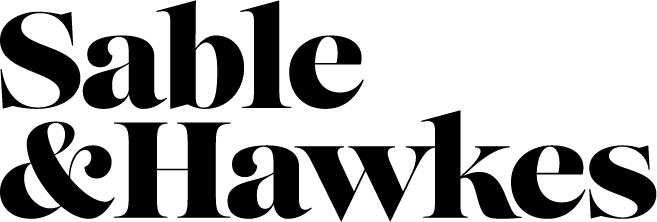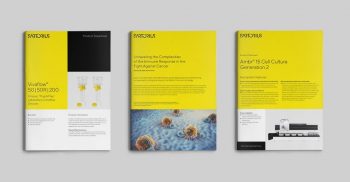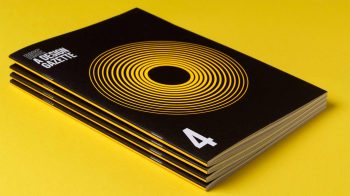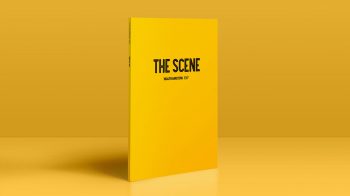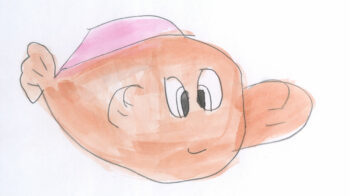How to write a campaign brief
The next in our series Tales from the Front Line, insights from our very own independent marketing specialist and great friend of Sable&Hawkes
As a grizzled old veteran I often find myself despairing of what marketing entails these days… I know time for the slippers granddad…but before you stop reading, I promise you I won’t be advocating for the good old days of ad bromides, lino type and colour separations, like some sadly deluded Brexit voting nostalgia junkie. There are no sunlight uplands for me.
You can miss stuff though… not because it was necessarily better but because it was different and added something to the marketing process. No, scrub that, some of it was better.
When was the last time you wrote a long, detailed campaign brief, supported with research and proper strategic arguments? And then suffered the piss taking creatives who mocked your carefully constructed document because they knew better? Or the excitement of seeing the initial ideas and the arguments about copy and media execution? Oh, how we loved the designers taking hours to find the perfect position to include the phone number on an ad. Happy days.
By contrast what do we have today? Giving your money to the evil empires to rustle up a few clicks…no comparison is it? And to make that happen the most creative you get is going back to writing classified ads (ask your Dad). Not that there isn’t a skill in that, but hey it’s not like a proper campaign or effective creative work is it?
And before you content creators get started… just relax, I’m not getting at you (well not much), but as we used to say (‘back in the day’ klaxon sounding), PR? How hard can it be? Let’s be honest, most of this digital world stuff is all just so utilitarian.
Which is why I was so pleased to see some light in the gloom, a shining beacon of something different that should give hope to us all.
The source of my joy comes from Hollywood. You may have heard about Ryan Reynolds and his foray into the world of marketing, actually less of a foray, more like a creative assault. He is a film star I hear you say? What does he know? Let’s get the disclaimers in… yes, he has Hollywood connections, yes, he uses his own companies (Aviator Gin, Mint Mobile) as clients, and yes, he is Ryan Reynolds, so maybe he isn’t short of a few bob… but those details are not the point. Of course, they give him advantage, and let’s face it a proper leg up, but it isn’t about the easy life. This is about the tricky stuff, the stuff that makes Mr. Reynolds and his creative team stand out…it’s about ideas.
Remember them? Smart ideas, the less than obvious ideas, the ideas that don’t follow convention, the ideas that stand out, the ideas that are a bit braver than everyone else’s and the ideas that get a result.
I promise this whole thing isn’t some Ryan Reynolds fanboy piece, but let’s look at the idea that inspired this article.
If you wanted to run a TV ad during the recent NFL Superbowl it would have cost you upwards of $5 million. For Ryan Reynolds, owner of US business Mint Mobile, that was not going to happen.
He decided to run superbly written press ads that made the following offer: $5million = 300,000 hours of Mint Mobile use at the standard rate of $15 per month. Rather than spend the money on an ad in the Superbowl Mint Mobile used their old school ads to give new customers the chance to sign up between the start of the game and the final whistle and receive 3 months of Mint Mobile service for free. It was a simple, clever idea, loaded with customer benefit and a powerful call to action. It did not follow the convention, it did something counter intuitive and generated coverage not only from the paid media they booked but also from the reach of the story being shared across other platforms.
This sort of work should lift all our spirits. It should inspire, it should embolden us to do different but still do good, i.e. link marketing directly to sales success.
We seem to have lost our way with creative work, haven’t we? We’ve lost the confidence to brief, to ask for new ideas and new thinking. We’ve also probably lost the confidence in being able to judge creative work. Is it good? Who knows? Well let’s be honest… if you briefed it properly and have a strategy, then you should know.
How do we get our creative mojo back then? Taking our new friend Ryan as our inspiration, here is a three point plan to getting those juices flowing again… (no sniggering at the back)
- One of the best things you can do is hang around with creative people. In person and virtually, you might even want to try those things called books. You can still find them if you look hard enough. If you already use an agency, spend more time with them; go to networking where creatives go (maybe try the pub?); get involved in webinars, exhibitions and talks. If you fancy reading, try Dave Trott, Adam Morgan & Mark Barden, or go back to the classics, if you haven’t read Ogilvy, you should. The more you know and understand, the more confident you will feel.
- Then do some of the less glamorous stuff. Take the time to really know your market, your competitors and your customers. Look at the trends, soak up the macro predictions and the things coming down the track. The most important of these is knowing your customers. That might mean formal research, it might be conducting your own feedback surveys or observations. Whatever it takes you need to be where your customers are and be there in a way that surprises them, and you can’t do that if you don’t know them or what effects them.
- The last one is the hard one – be brave. Take your time with thinking and briefing. Experiment and test. Challenge your agency partners. Invest in the creative process and trust your instincts. Not everything will work, but a lot of it will. Complete steps 1 and 2 and then 3 will be a lot easier.
In conclusion
Remember there is nothing new going on here in the digital world… promotion is promotion, it is just that we have a couple of new formats to use. In the end there is no substitute for ideas, but we seem to have been brow beaten into thinking it’s all about data and budgets. And while those things are very important, they will not make you stand out. Classified ads are things you look for, creative advertising, when done properly, stops you in your tracks. Classifieds on their own they will not help a small business use their limited resources wisely and creatively to get more bang for their promotional buck. You have to build commercial success on good ideas and not spreadsheets. As one other famous film star said, ‘Hollywood is more an idea than a place’.
